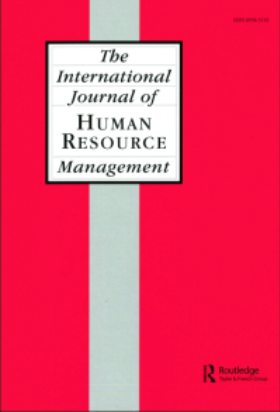国家文化和劳动力市场的灵活性
IF 4.9
2区 管理学
Q1 MANAGEMENT
International Journal of Human Resource Management
Pub Date : 1999-01-01
DOI:10.1080/095851999340288
引用次数: 25
摘要
本文以利普塞特的工作为基础,对劳动力市场的灵活性进行了文化解释。利用霍夫斯泰德对民族文化进行分类的概念框架,得出了与就业、工资谈判、失业者待遇和霍夫斯泰德的民族文化维度有关的各种劳动力市场制度和刚性的关联的某些假设。这些假设是用经合组织国家的数据进行检验的,使用的是普通最小二乘回归。研究结果表明,Hofstede的文化指数与各种劳动力市场刚性之间存在很强的统计关联。特别是,Hofstede的MAS变量和我们所有的劳动灵活性变量之间存在很强的反比关系。反映女性性别结构的文化价值似乎与劳动力市场缺乏灵活性密切相关。在UAI维度上的得分与就业刚性和薪酬谈判之间也存在很强的统计关联……本文章由计算机程序翻译,如有差异,请以英文原文为准。
National culture and labour-market flexibility
This paper develops a cultural explanation for labour-market flexibility, building on the work of Lipset. Using Hofstede's conceptual framework for categorizing national cultures, certain hypotheses are derived concerning the association of various labour-market institutions and rigidities connected with employment, pay bargaining the treatment of the unemployed, and Hofstede's dimensions of national culture. These hypotheses are tested on data for OECD countries, using ordinary least squares regression. The results demonstrate a strong statistical association between Hofstede's cultural indices and the various labour-market rigidities. In particular, there is a strong inverse relationship between Hofstede's MAS variable and all our labour flexibility variables. Cultural values reflecting feminine gender structuring appear to be strongly associated with labour-market inflexibility. There is also a strong statistical association between scores on the UAI dimension, and employment rigidities and pay-bargain...
求助全文
通过发布文献求助,成功后即可免费获取论文全文。
去求助
来源期刊
CiteScore
11.70
自引率
7.10%
发文量
77
期刊介绍:
International Journal of Human Resource Management is the forum for HRM scholars and professionals worldwide. Concerned with the expanding role of strategic human resource management in a fast-changing global environment, the journal focuses on future trends in human resource management, drawing on empirical research in the areas of strategic management, international business, organizational behaviour, personnel management and industrial relations that arise from: -internationalization- technological change- market integration- new concepts of line management- increased competition- changing corporate climates Now publishing twenty-two issues per year, The International Journal of Human Resource Management encourages strategically focused articles on a wide range of issues including employee participation, human resource flow, reward systems and high commitment work systems. It is an essential publication in an exciting field, examining all management decisions that affect the relationship between an organization and its employees. Features include; -comparative contributions from both developed and developing countries- special issues based on conferences and current issues- international bibliographies- international data sets- reviews

 求助内容:
求助内容: 应助结果提醒方式:
应助结果提醒方式:


